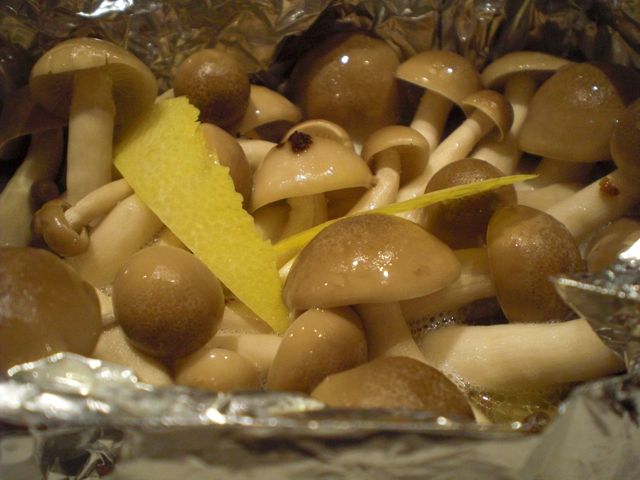I just read an interesting
article on Ramen noodles in Japan (Tokyo) in New York Times. I learned from this article that there are quite a few blogs both in
English and Japanese on Ramen. In the previous ramen post, I also mentioned that you could get famous and regional
ramen (at least soup and noodles) by mail order in Japan but apparently there is
a specialized website for oversea Ramen fans. I am not obsessed about or a connoisseur of ramen noodles but what an amazing world of the ramen noodles and the ramen obsessed! I also promise that this will the last post on ramen noodles.
When I posted
"Japanese pork pot roast" 焼豚, I was trying to make it last until the next weekend so that I can make an example of a classic ramen noodle. It was miraculous that we still had the pork left on the next weekend. I also made another classic ramen topping, "seasoned" soft boiled eggs 煮卵 or 味付け卵 by simply marinating soft boiled eggs in the reduced marinade of the Japanese pork pot roast for several hours to overnight.
I made a sort of classic and simple "shio" 塩ラーメン or "salt" ramen in which "soup" is chicken broth with salt without soy sauce or miso paste. Again, the way I made the broth is my own short-cut method. I try to enhance flavors of a store-bought chicken broth. I saute one small onion thinly cut in a sauce pan with a small amount of vegetable oil and a splash of dark roasted sesame oil. I brown or caramelize onion with several thin slices of fresh ginger. When the onion is browned and "
fond" has developed on the bottom of the pan, I add chopped garlic and saute for few more minutes. I then deglaze with sake (2 tbs or so) and scrape off the "
fond" as much as I can. Then I add chicken broth (I used a 16oz box, which is about 470ml, of
Swanson zero-fat, 33% reduced salt chicken broth). I let it simmer until I am ready for the noodles and toppings. Just before serving, I taste and add salt if needed (It has reduced to about 400ml, this is one of the reasons I use a low-salt variety). I pour only the broth through a strainer into the two bowls, discarding the solids. The resulting broth has a nice chicken flavor with some sweetness from the onion and a slight ginger note and is not bad. I used
the same dried ramen noodles I used before and divided one serving into two small portions.
For toppings, two thick slices of the pork pot roast 焼豚 or チャーシュー, half of "seasoned" egg (marinate for 1 hour), seasoned bamboo shoots called "menma" メンマ or "shinachiku" 支那竹 (meaning chinese-style bamboo shoots) (see below image), thinly sliced scallion, and Nori 海苔 seaweed. I add freshly ground black pepper, although traditinally Japanese uses finely ground white pepper.
These toppings are classic. Slices of the Japanese pork pot roast definitely make this dish. The egg is also excellent.

